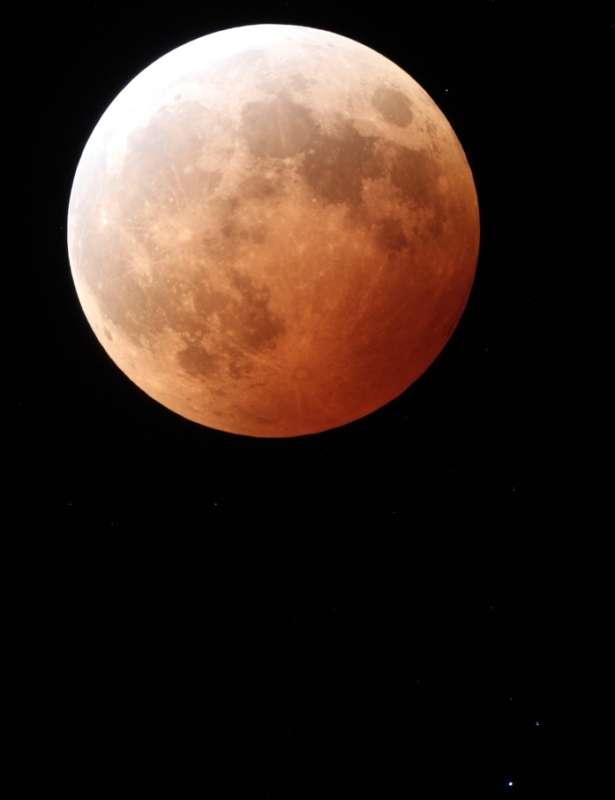Credit & Copyright: Rick Baldridge
Explanation:
From the early hours of October 8, over
the Santa Cruz Mountains near Los Gatos,
California, the totally eclipsed Moon shows a range
of color across this well-exposed telescopic view of the
lunar eclipse.
Of course, a lunar eclipse can only occur when the Moon
is opposite the Sun in Earth's sky and gliding
through
the planet's shadow.
But also near opposition during this eclipse,
and remarkably only half a degree or so from
the lunar limb, distant Uranus is faint but easy to spot
at the lower right.
Fainter still are the
ice giant's moons.
To find them, slide your cursor over the image
(or
just follow this link) to check out a longer exposure.
While even the darkened surface of our eclipsed Moon will bestrongly overexposed,
Uranus moons Titania,
Oberon, and Umbriel can just be
distinguished as
faint
pinpricks of light.
1999 2000 2001 2002 2003 2004 2005 2006 2007 2008 2009 2010 2011 2012 2013 2014 2015 2016 2017 2018 2019 2020 2021 2022 2023 2024 2025 |
Январь Февраль Март Апрель Май Июнь Июль Август Сентябрь Октябрь Ноябрь Декабрь |
NASA Web Site Statements, Warnings, and Disclaimers
NASA Official: Jay Norris. Specific rights apply.
A service of: LHEA at NASA / GSFC
& Michigan Tech. U.
|
Публикации с ключевыми словами:
total lunar eclipse - лунное затмение - противостояние
Публикации со словами: total lunar eclipse - лунное затмение - противостояние | |
См. также:
Все публикации на ту же тему >> | |
